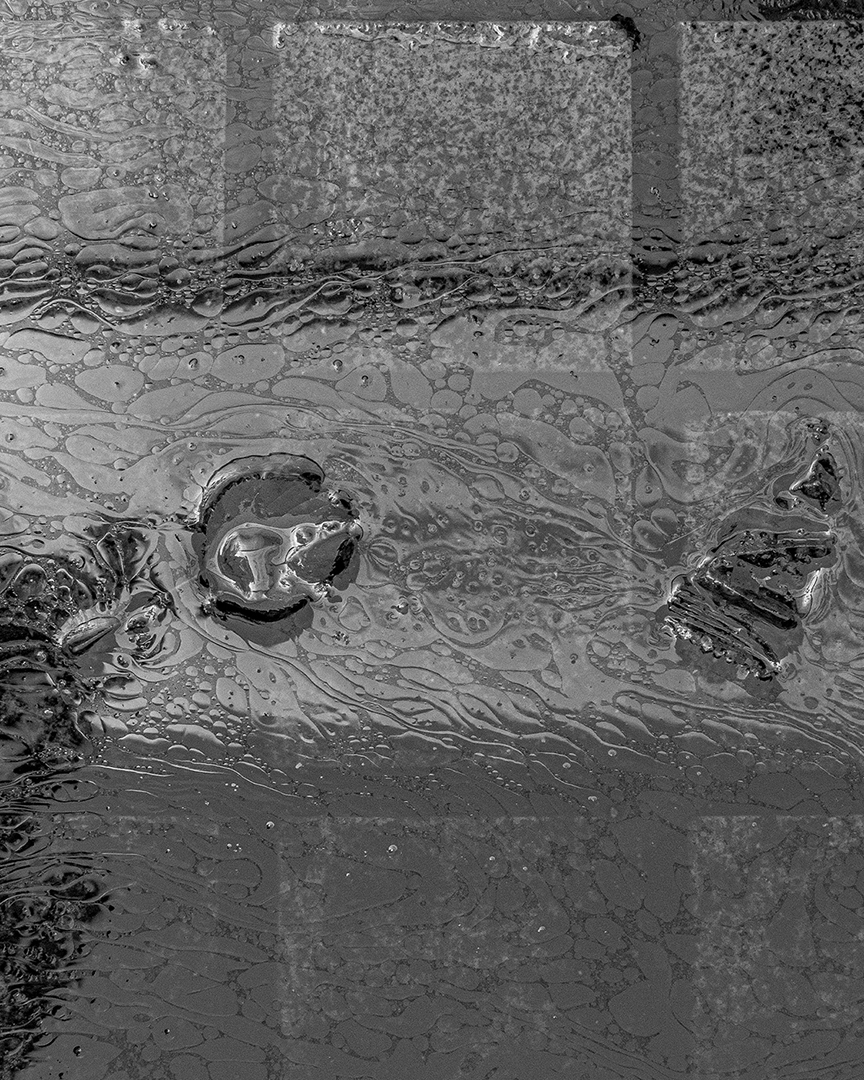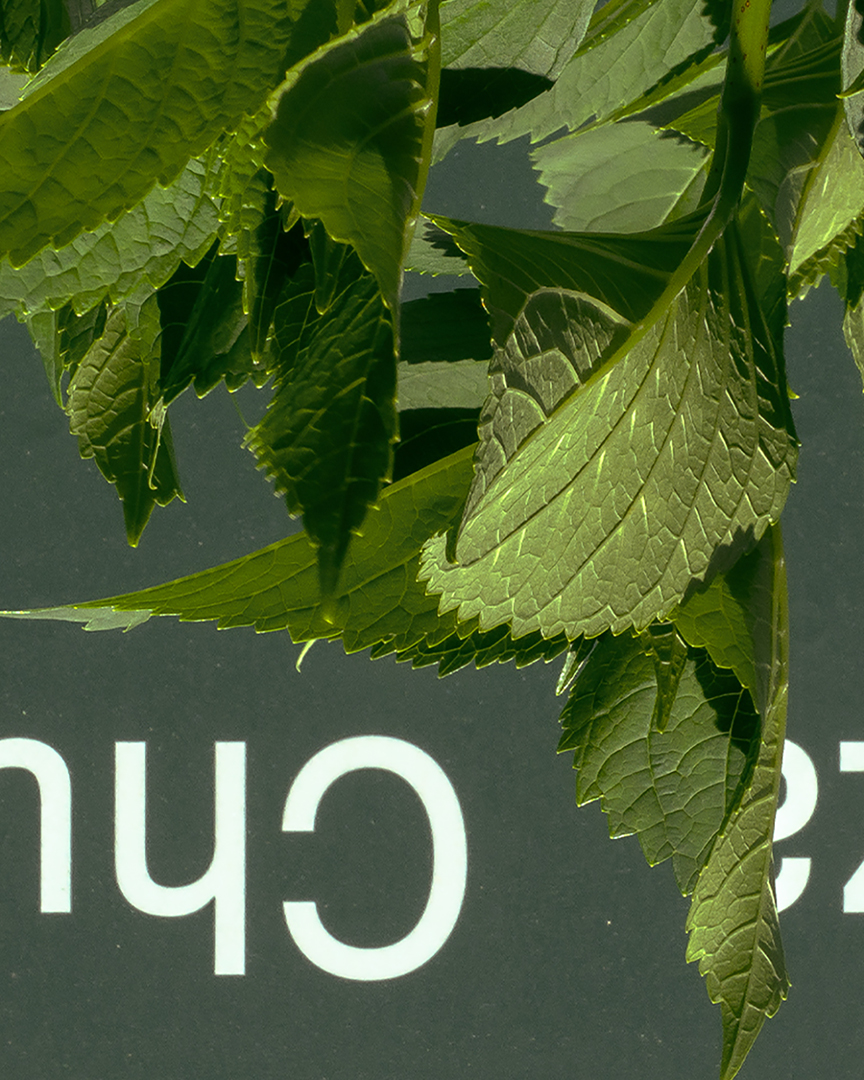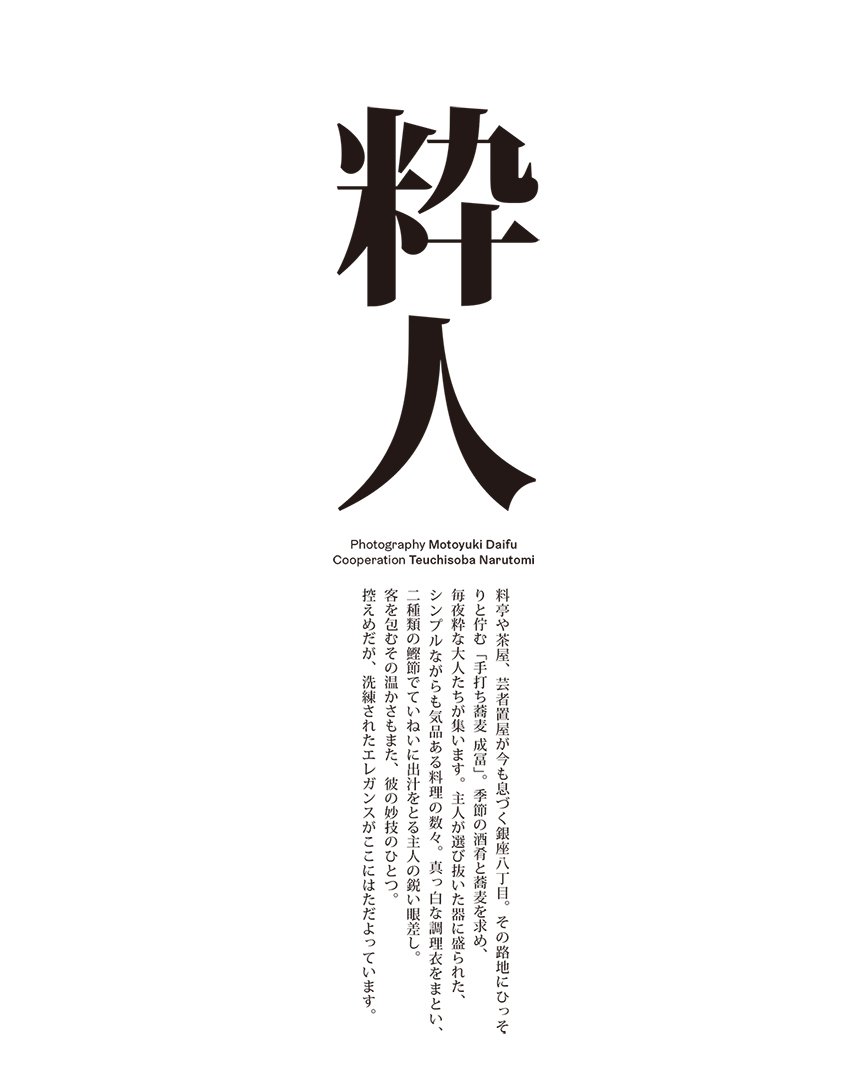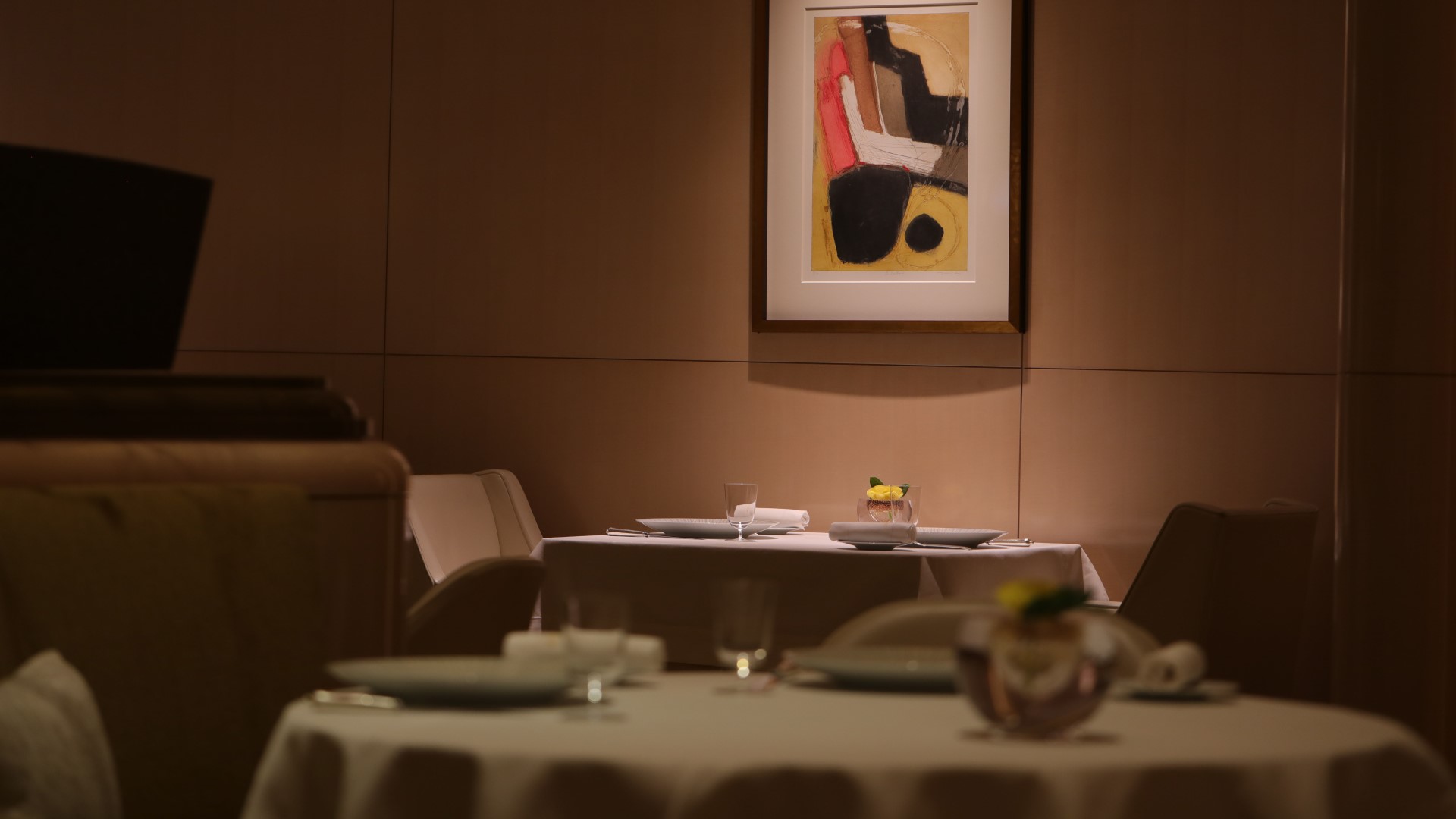
銀座・メモワール #3 オリヴィエ・シェニョン・後篇「現代におけるよいシェフの条件」
文/平岩壮悟
写真/ナタリー・カンタクシーノ
通訳/田村友子(L’OSIER)
2024.10.17
銀座――この魅力的な街は、多くの人々にとって、特別な瞬間や記憶に残る場所となっています。親に手を引かれて足を踏み入れたデパート、マスターのこだわりを感じる喫茶店、初デートで訪れたレストラン。どれもが、この街の独特の雰囲気と結びついています。
連載「銀座・メモワール」では、森岡書店代表、森岡督行さんがナビゲーターとして登場します。多様なゲストが織りなす銀座の豊かな物語を共有し、銀座の多面性とその普遍的な魅力に焦点を当てます。連載を通じて、銀座の隠れた魅力と多彩なストーリーに触れ、新たな価値を一緒に発見しましょう。
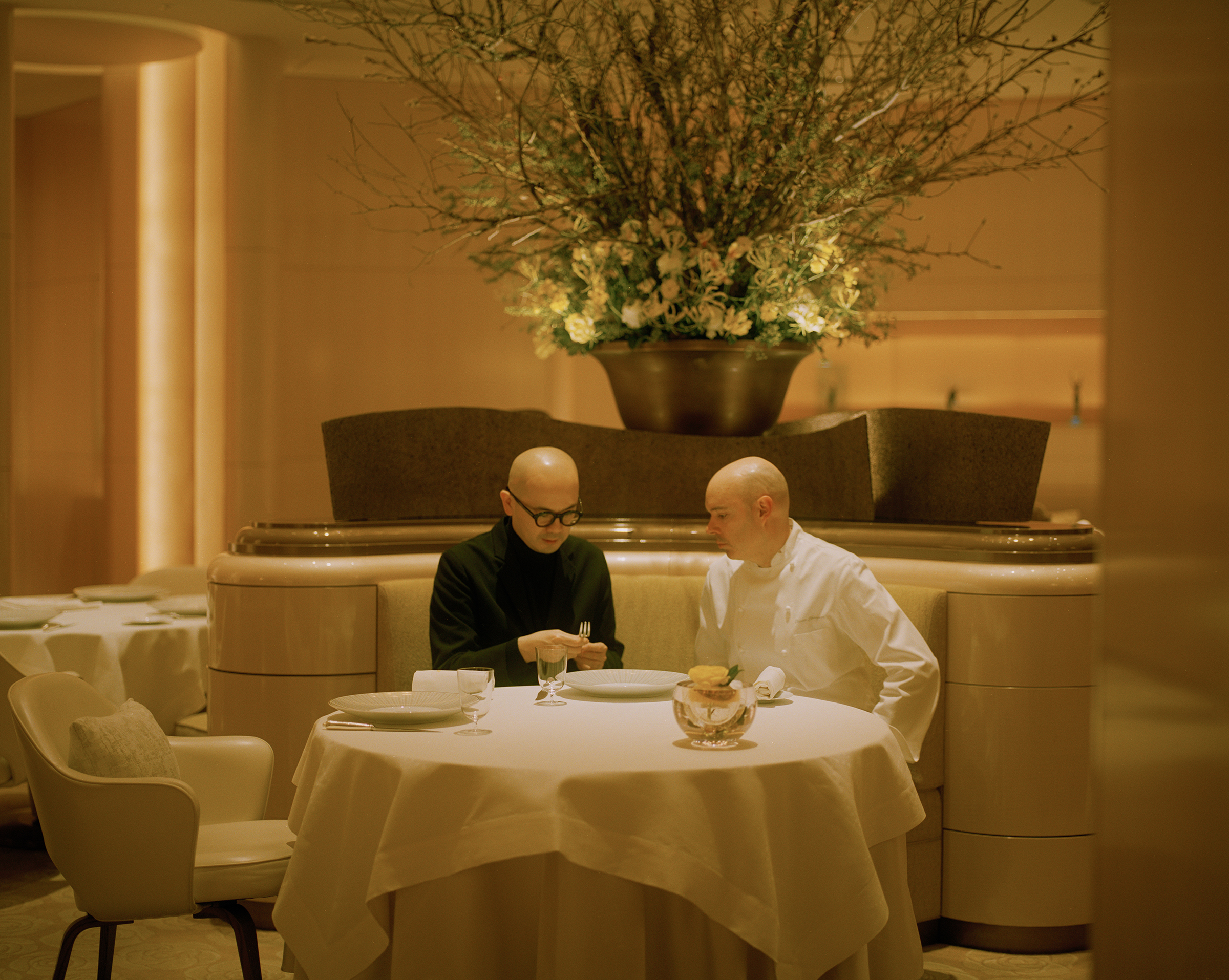
三つ星レストラン「ロオジエ」のエグゼクティブシェフを務めるオリヴィエ・シェニョンさんをゲストに迎えた「銀座・メモワール」第3回。後篇は、料理の腕前以外の職能が求められる現代的なシェフのあり方について、そしてシェニョンさんが密かにアイデアを温めているという銀座を拠点にした食プロジェクトの話へ続きます。
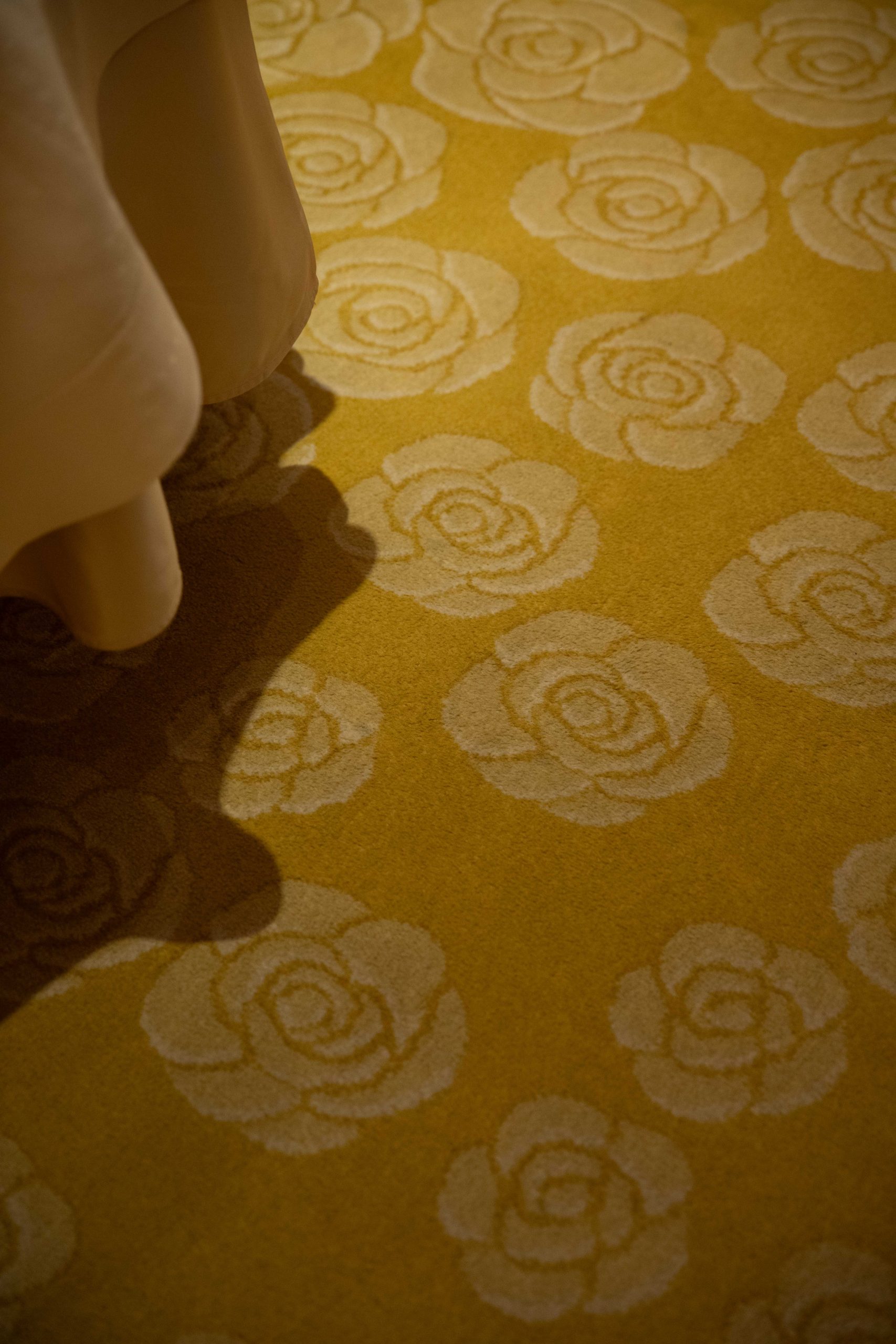
すべては特別な体験を提供するために
森岡 お話を聞いていると、今の時代のシェフの仕事は本当に多岐にわたりますね。料理だけではなく、お店のディレクションや生産者と共同で土壌改良もしている。大変な職業だと思いました。
シェニョン そうですね。シェフは第一に手仕事ですが、チームをまとめる能力が求められますし、最近ではPRもできなくてはなりません。私の場合、ユニフォームを選んだりお皿のデザインを発注したりもしています。このあいだも、抽象的な椿の花びらをあしらったお皿をつくりました。
森岡 アートディレクターに近いですね。
シェニョン 食後のデザートを載せるワゴンも自分でデザインしました。引き出しがお客さんのテーブルの上に載るような高さでオーダーして。そういう意味では、さまざまな職能が求められます。
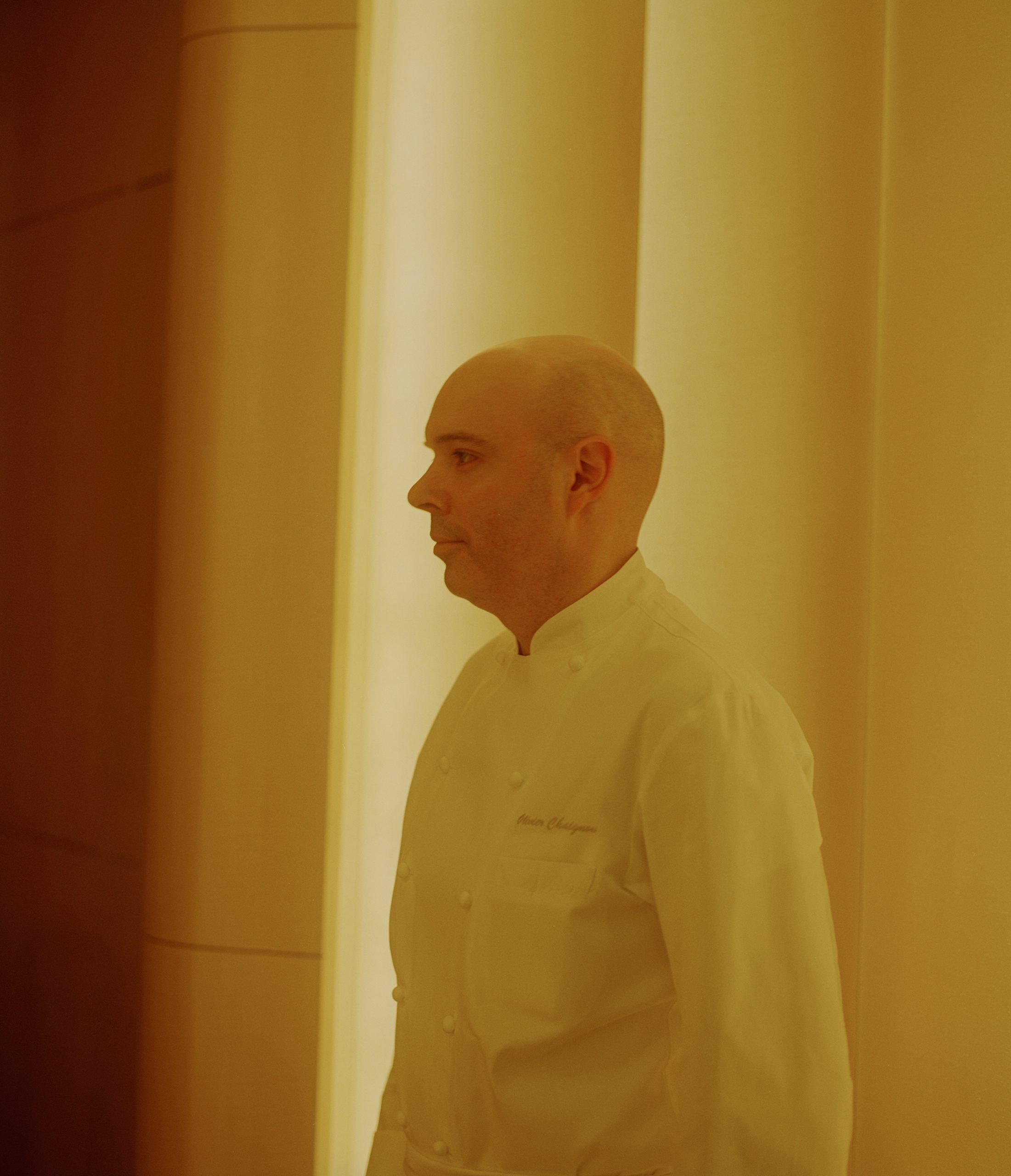
森岡 時代に応じてシェフの役割も変わっていくものだと思いますが、シェニョンさんから見て、現代においてよいシェフの条件は何だと思いますか?
シェニョン 第一に、よい食材を見つけられること。これはいつの時代も変わりません。それに加えて、今は生産者と協働することが求められていると思います。そこで採れる野菜や果物を使って新しいレシピをつくれば、生産地や農家の価値を高めることもできます。またマイクロバイオーム農法にしても、研究者だけでは、従来のやり方を変えることに抵抗のある農家の方たちに対して変化を促すのはむずかしい場合があります。ですが、シェフからアプローチすれば、聞く耳を持ってもらえることもある。
森岡 エコシステム全体の改善に積極的に関わっていくわけですね。
シェニョン 九州に国産のサフラン農園があるのをご存じですか? 九州の一部の地域では昔から体調がよくないときにサフランをお湯に入れて飲む文化があるんです。漢方みたいに。でも、日本にサフラン農園があること自体あまり知られていません。そうした知られざる国内の産地に光をあてるのも私の役目だと考えています。サフランは生産国によっては、その生産過程で社会的に課題を抱える国もありますが、国産であればその問題もありません。味がよく、健康的で、よいことずくめです。
森岡 これからのシェフの仕事はレストランの外にあるのかもしれないですね。
シェニョン でも、最初からそれが目的だったわけではありません。どれもロオジエのお客さんに特別な体験をしてほしい、という願いから始まった取り組みです。
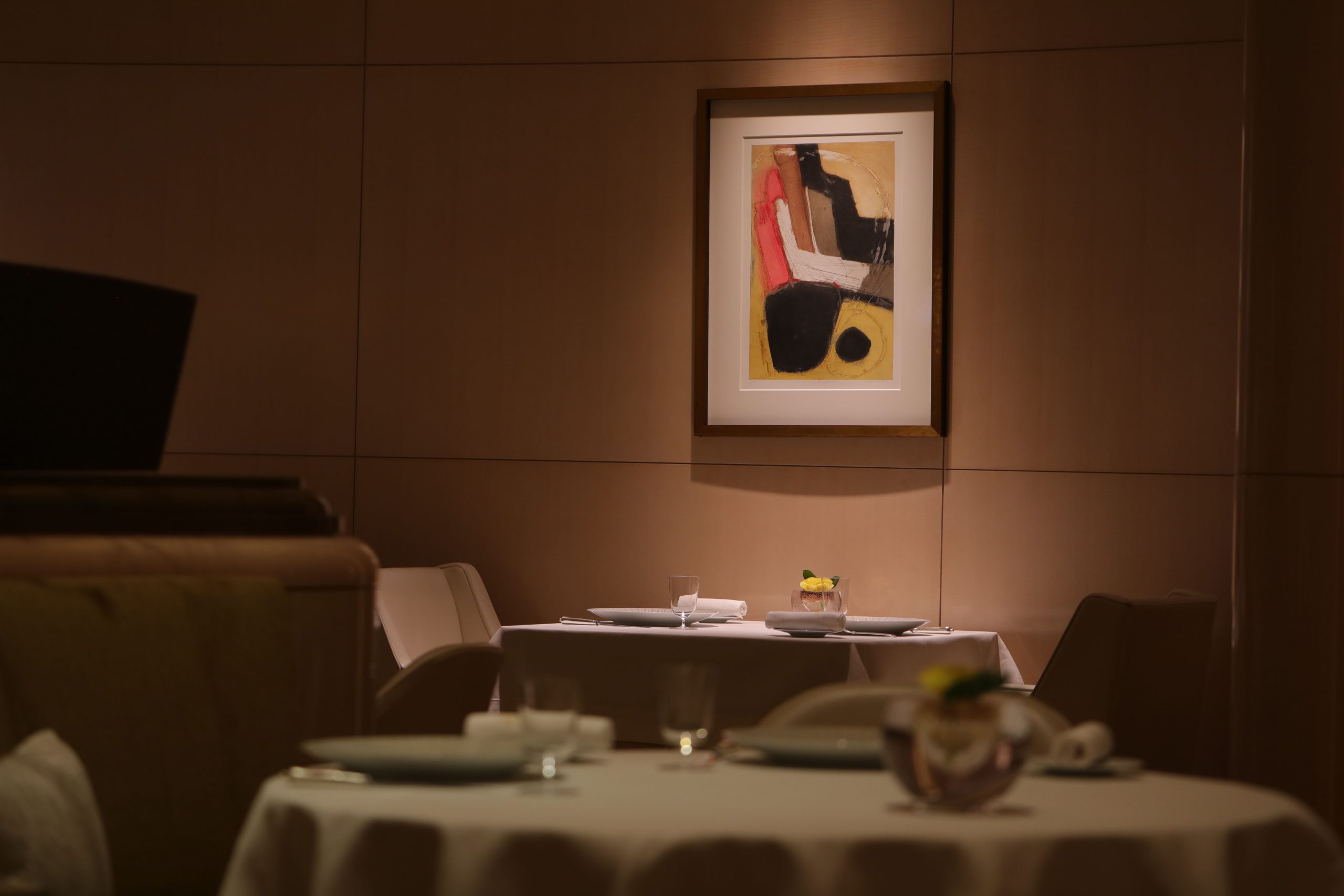
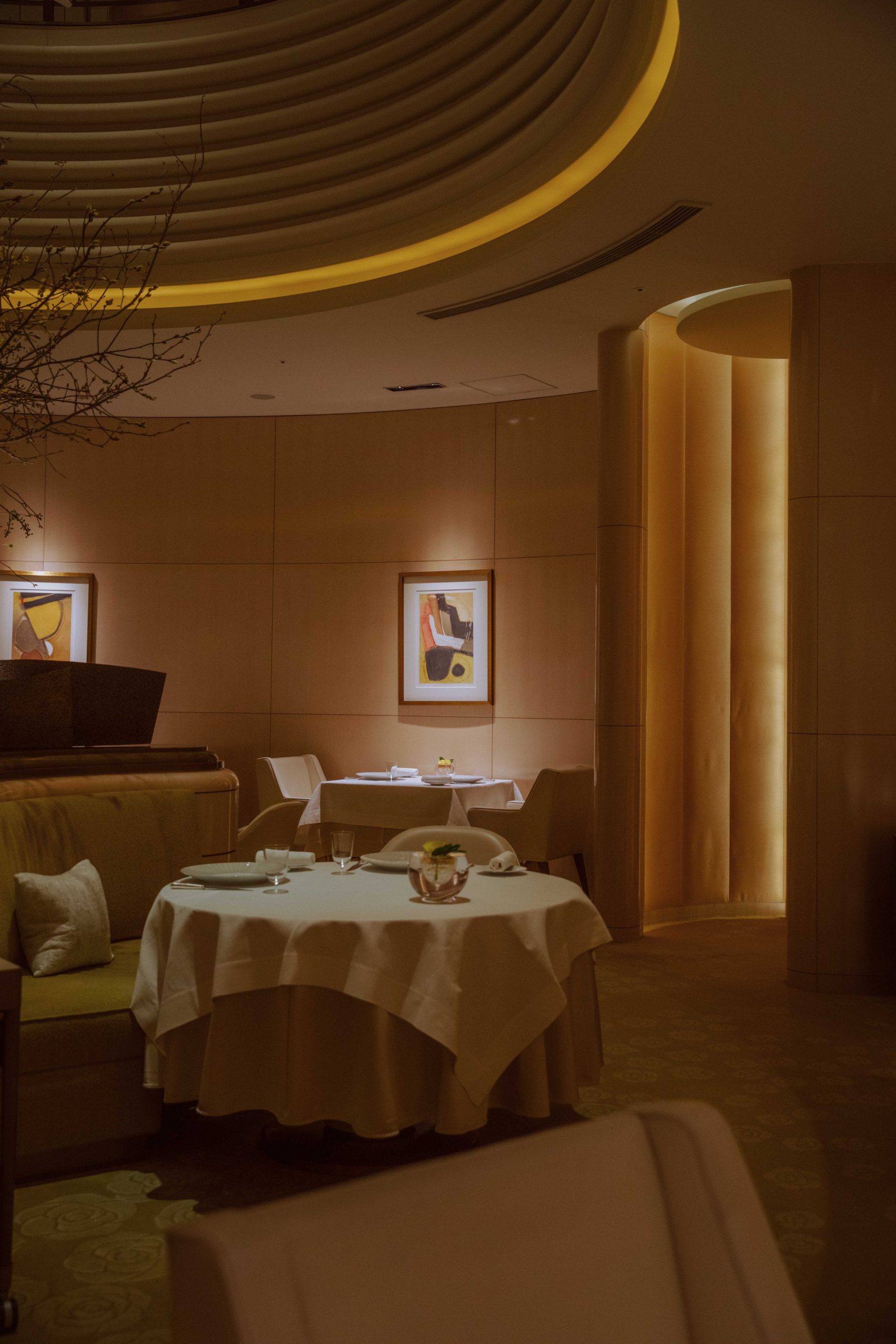
銀座から始まる、未来のガストロノミー
森岡 ロオジエは創業以来の“伝統のメニュー”がないと伺いました。
シェニョン そうです。もちろん伝統は大切です。しかし、私は変わることがレストランの一部だと考えています。それに評判になったメニューを「スペシャリテ」として提供するレストランもありますが、スペシャリテを決めるのはお客さんであって、お店ではないと思うんです。
森岡 そのようにお考えになったのには、何か訳があるのでしょうか。
シェニョン リクエストがあれば同じ料理をお出しすることもありますが、基本的にはいつも新しい料理を提供できるように努めています。メニューはもちろん、サービスやインテリアも。変化させることが前提なんです。月に何度も食べに来てくださるお客さんもいますから、彼らにも常に新しい発見をしてほしいのです。
森岡 常連客たちに、毎回新しい体験を提供するのは大変ですね。
シェニョン すべてを変えることはできなくても、少しでも新しさを加えることはできます。そのために、お客さんがいつ来て何を食べたかは、すべて記録しています。
森岡 それはすごいですね。
シェニョン それにメニューを替えれば、チームのモチベーションも上がります。同じものを繰り返しつくっていても刺激がないですからね。同じ食材を使うにしても、調理法はよく変えています。
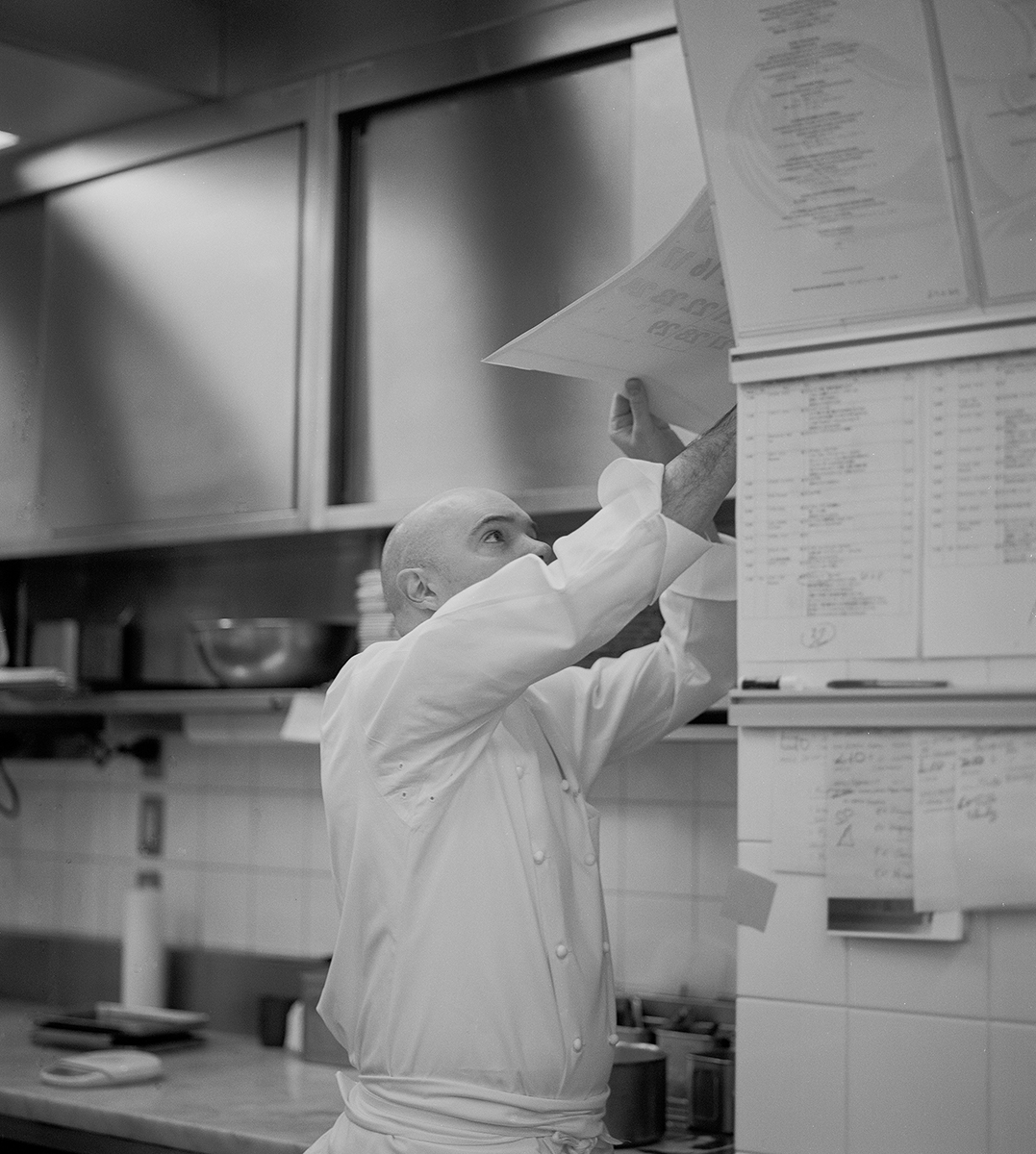
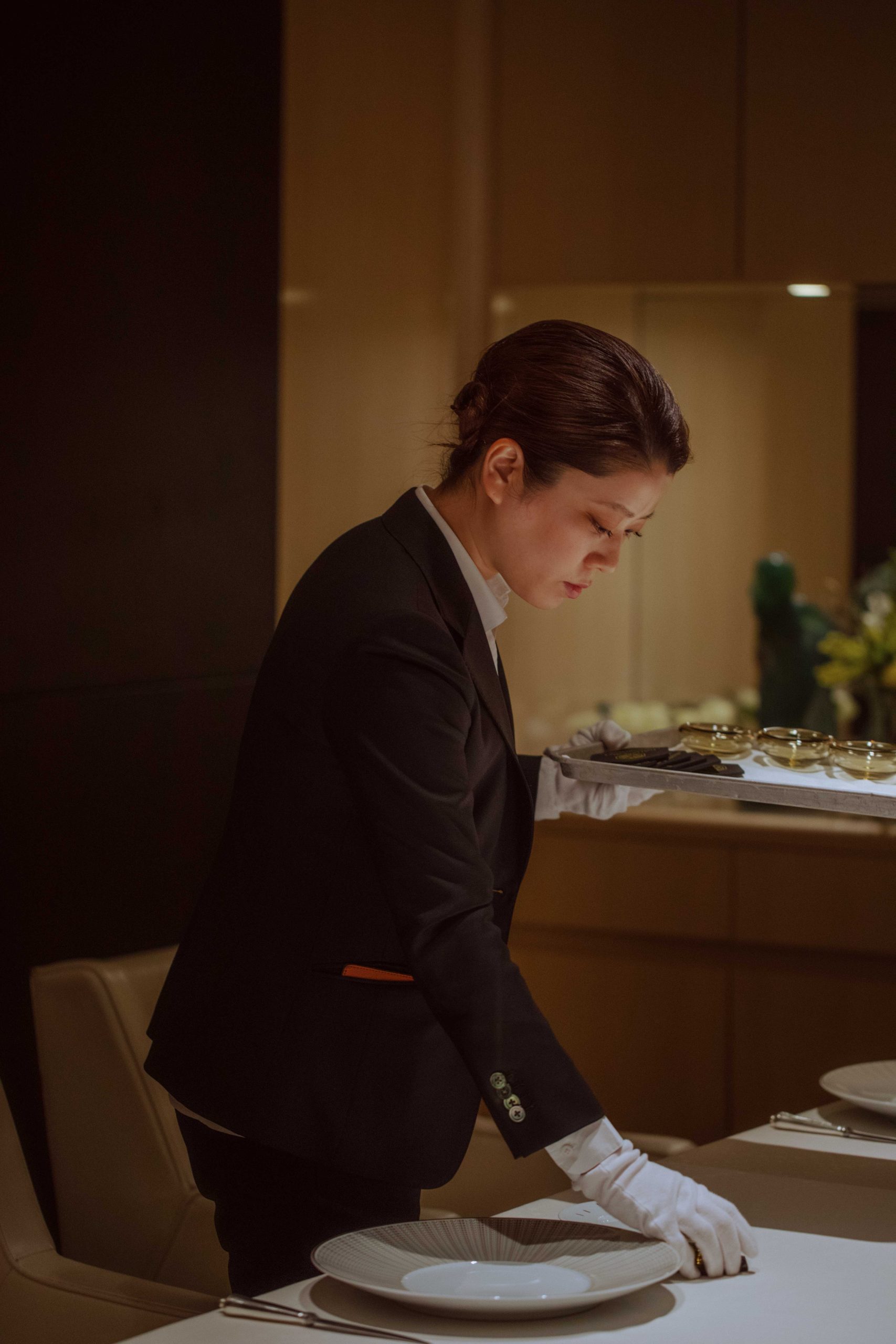

森岡 今後、シェニョンさんがロオジエでやっていきたいことはありますか?
シェニョン 子どもへの食育を通じて、消費者の意識を変えたいと考えています。日本のスーパーの野菜や果物は同じ大きさのものが並んでいて綺麗ですが、曲がったニンジンやしみがあるトマトはまず並ばない。でも、不恰好なものでも味や栄養素に差はありません。その意識を変えたいんです。なぜ子どもかというと、彼らが次世代の消費者だからです。本来の野菜や果物のあり方を知ってほしいのです。
森岡 銀座にその拠点となる場所があったらいいですよね。
シェニョン 将来的には、全国のマイクロバイオーム農法を取り入れている農家の食材を集めて、テイスティングができる空間を銀座につくりたいと考えています。野菜を収穫したり、曲がったニンジンを生で子どもに食べてもらったりできる場所ですね。
森岡 それ、面白いですね!
シェニョン 生の野菜だけではなく、加工品を扱ってもいいかもしれません。生産者からも野菜や加工品を送ってもらって、しっかり利益を還元できる場ができたらいいですね。すべての食材をロオジエで使うことはできませんが、マイクロバイオーム農法に取り組んでくれるのであれば、私としても6次産業的な取り組みなど、できるかぎり協力するつもりです。今後このムーブメントに、さまざまな文化の人たちが参加してくれることを祈っています。
森岡 名前はどうしましょうか?
シェニョン 名前はまだ決まっていません。考えないといけないですね。

オリヴィエ・シェニョン
日本とフランスの最高の食材をセレクトし、独自の感性による新たなコンビネーションを生かした繊細な味とテクスチャーがオリヴィエ・シェニョンならではの絶妙なハーモニーを生み出している。
「タイユヴァン」、「ピエール・ガニェ―ル」のパリ本店などで経験を積み、2005年「ピエール・ガニェール・ア・東京」の総料理長として来日。2013年「ロオジエ」のエグゼクティブシェフに就任。『ミシュランガイド東京2015~2018』では二つ星、『ゴ・エ・ミヨ東京2017』において「今年のシェフ賞」受賞、『ミシュランガイド東京2019』より6年連続で三つ星を獲得。
https://losier.shiseido.co.jp/森岡督行
1974年山形県生まれ。森岡書店代表。文筆家。『800日間銀座一周』(文春文庫)、『ショートケーキを許す』(雷鳥社)など著書多数。
キュレーターとしても活動し、聖心女子大学と共同した展示シリーズの第二期となる「子どもと放射線」を、2023年10月30日から2024年4月22日まで開催する。
https://www.instagram.com/moriokashoten/?hl=ja平岩壮悟
編集者/ライター
1990年、岐阜県高山市生まれ。フリーランス編集/ライターとして文芸誌、カルチャー誌、ファッション誌に寄稿するほか、オクテイヴィア・E・バトラー『血を分けた子ども』(藤井光訳、河出書房新社)をはじめとした書籍の企画・編集に携わる。訳書にヴァージル・アブロー『ダイアローグ』(アダチプレス)。
https://www.instagram.com/sogohiraiwa/ナタリー・カンタクシーノ
フォトグラファー
スウェーデン・ストックホルム出身のフォトグラファー。東京で日本文化や写真技術を学び、ファッションからドキュメンタリー、ライフスタイルのジャンルで活躍。
https://www.instagram.com/nanorie/
Ginza Memoir #3 Olivier Chaignon, Part 2 “What It Takes to Be a Chef Today”
2024.10.17
Text/Sogo Hiraiwa
Photography/Nathalie Cantacuzino
Translation/Tomoko Tamura(L'OSIER)
Ginza is a fascinating town, frequently linked with special moments and fond memories. Visits to department stores while holding tightly to a parent’s hand, afternoons in old-fashioned cafés run by one-of-a-kind characters, first dates in special restaurants . . . Ginza is a place like no other.
Hanatsubaki’s “Ginza Memoir” series, hosted by Yoshiyuki Morioka of the iconic Morioka Shoten bookstore, explores the multifaceted nature and universal appeal of Ginza through interviews with guests from a wide variety of fields. With Morioka as guide to Ginza’s hidden charms and diverse narratives, new discoveries await around every corner.
Our third guest for “Ginza Memoir” is Olivier Chaignon, executive chef of the three-star French restaurant L’Osier. In the second half of our conversation, we discuss the many skills contemporary chefs are expected to master outside the kitchen and Chaignon’s secret idea for a gastronomic project that could use Ginza as home base.
(Read Part 1 here.)
All to Provide the Guest with a Special Experience
Morioka: Our conversation has brought home for me the sheer range of tasks today’s chefs are expected to master. In addition to the culinary side of things, you are also responsible for the restaurant’s overall direction; in your case, you even work with primary producers to improve their soil. It must be a very challenging profession.
Chaignon: I suppose so. We chefs work with our hands first and foremost, but we also need the ability to lead a team, and these days PR skills are required as well. I even choose staff uniforms and order tableware designs. One recent task I handled was creating a plate with an abstract camellia petal design.
Morioka: That sounds like an art director.
Chaignon: I even designed our dessert wagon. I had it custom-made with drawers that could open above the tables our guests sit at. In that sense, chefs are expected to have a range of abilities.
Morioka: The role of chef is clearly changing with the times. What do you see as the requirements for a good chef today?
Chaignon: First of all, the ability to find good ingredients. That requirement is the same in every age. In addition, I see growing demand for the ability to collaborate with producers. Developing new recipes using produce from a particular region or farm increases that region or farm’s value. With respect to microbiome farming, researchers sometimes struggle to convince farmers to change the way they have always done things, but if a chef approaches the same farmers, they may be more willing to listen.
Morioka: In other words, proactive engagement with improving the ecosystem as a whole.
Chaignon: Did you know that there is a saffron farm in Kyushu? In some parts of Kyushu, drinking hot water infused with saffron when feeling unwell is a cultural tradition. Like traditional Chinese medicine. But few people know that saffron is produced in Japan at all. I believe that shining the spotlight on unknown domestic production areas like this is also part of my role. In some saffron-producing countries, the production process is linked to social problems, but that is not a problem for domestic saffron. It tastes good, it’s healthy—it has countless benefits.
Morioka: Future chefs might work outside restaurants.
Chaignon: But that was not the initial goal. All of these initiatives began from the desire to provide a special experience to L’Osier’s guests.
Future Gastronomy—From Ginza to the World
Morioka: I have heard that L’Osier has no “traditional menu items” that date to its founding.
Chaignon: That’s correct. Tradition is important, of course. But I feel that change is also part of running a restaurant. Some restaurants offer their most acclaimed menu items as “specialties,” but in my opinion it is the guests who decide what a restaurant’s specialty is, not the restaurant itself.
Morioka: How did you come to think that way?
Chaignon: We do serve the same food if that is what a guest requests, but as a general rule we strive to always offer new culinary ideas. The same goes for our service and our interiors. Change is the baseline. Some of our guests come several times a month, and I want them to discover something new every time.
Morioka: Providing a new experience to regulars on every visit sounds challenging.
Chaignon: Not everything can be changed, of course, but we can add some novelty. For that reason, we always record when our diners came and what they eat.
Morioka: That’s remarkable.
Chaignon: Changing the menu also keeps our team motivated. Doing the same thing over and over gets dull, after all. Even when we use the same ingredients, we often change the preparation method.
Morioka: Do you have any particular ideas you hope to adopt at L’Osier in future?
Chaignon: I want to use food education for children to change how consumers think about produce. Japanese supermarkets are full of fruits and vegetables of uniform shape and size in neat rows. You never see crooked carrots or wrinkled tomatoes. But even produce that looks less appealing has the same flavour and nutritional value. I want to change attitudes around that. My focus is on children because they are the consumers of the future. They ought to know what the fruits and vegetables they eat truly look like.
Morioka: It would be nice if there were a place in Ginza to use as a base for this.
Chaignon: In the future, I am hoping to create a space in Ginza where people can taste ingredients gathered from farms using microbiome farming all over the country. A place people could harvest produce and children could try crooked carrots raw.
Morioka: That sounds fascinating.
Chaignon: The facility could also handle processed foods as well as raw vegetables. It would be good to have somewhere that received vegetables and processed foods from producers and sent profits back in return. We can’t use every ingredient at L’Osier, but if a farm is willing to embrace microbiome farming methods, I would be eager to cooperate as much as possible, in the spirit of the “Sixth Industrialization.” I hope that this movement will draw in participants from many different cultures in the future.
Morioka: What do you call this movement?
Chaignon: I haven’t decided on a name yet. I’ll have to think about that.
Olivier Chaignon
Olivier Chaignon selects the finest ingredients from France and Japan and combines them in new ways to create delicate flavours and textures that expressing his unique sensibility through sublime harmony. After working at Taillevent and Pierre Gagnaire in Paris, Chaignon came to Japan in 2005 as executive chef of Pierre Gagnaire a Tokyo. In 2013, he joined L’Osier as executive chef. From 2015 to 2018, L’Osier received two stars in the Tokyo Michelin Guide. In Gault & Millau Tokyo 2017, Chaignon won the Chef of the Year award. In the 2019 edition of the Tokyo Michelin Guide, L’Osier received three stars, and it has retained that rating for six years running—so far.
https://losier.shiseido.co.jp/Yoshiyuki Morioka
Born 1974 in Yamagata. Head of the Morioka Shoten bookstore. Writer. Published books include Around Ginza in 800 Days (Bunshun Bunko) and Forgiving the Shortcake (Raichosha). Also active as an art curator, with recent shows including Children and Radiation, the second stage of an exhibition held jointly with the University of the Sacred Heart (October 30, 2003–April 22, 2024).
https://www.instagram.com/moriokashoten/?hl=jaSogo Hiraiwa
Editor/writer
Born 1990 in Takayama, Gifu. Freelance editor and writer contributing regularly to literary, cultural, and fashion magazines. Also involved in planning and editing books, including the Japanese edition of Octavia E. Butler’s Bloodchild and Other Stories (trans. Hikaru Fujii). Translator of Virgil Abloh’s Dialogues (Adachi Press).
https://www.instagram.com/sogohiraiwa/Nathalie Cantacuzino
Photographer
Born in Stockholm, Sweden. Studied Japanese culture and photographic technique in Tokyo. Shoots in genres ranging from fashion to documentary and lifestyle.
https://www.instagram.com/nanorie/

